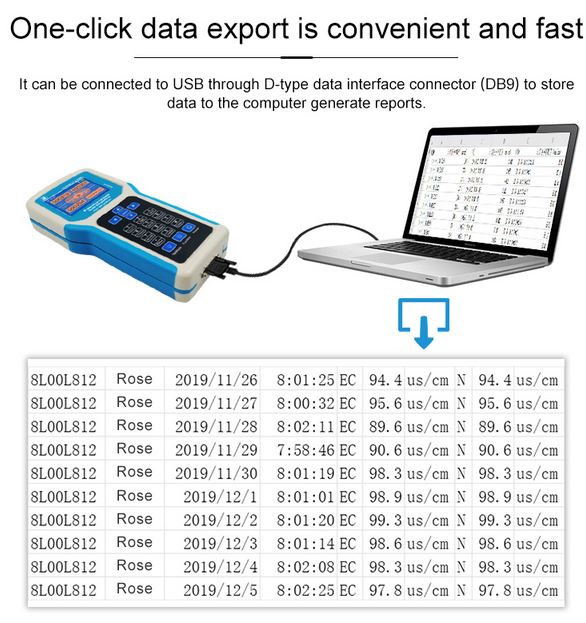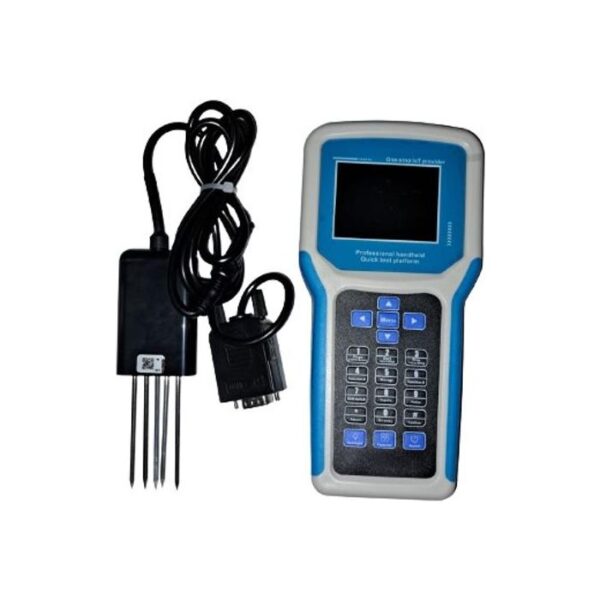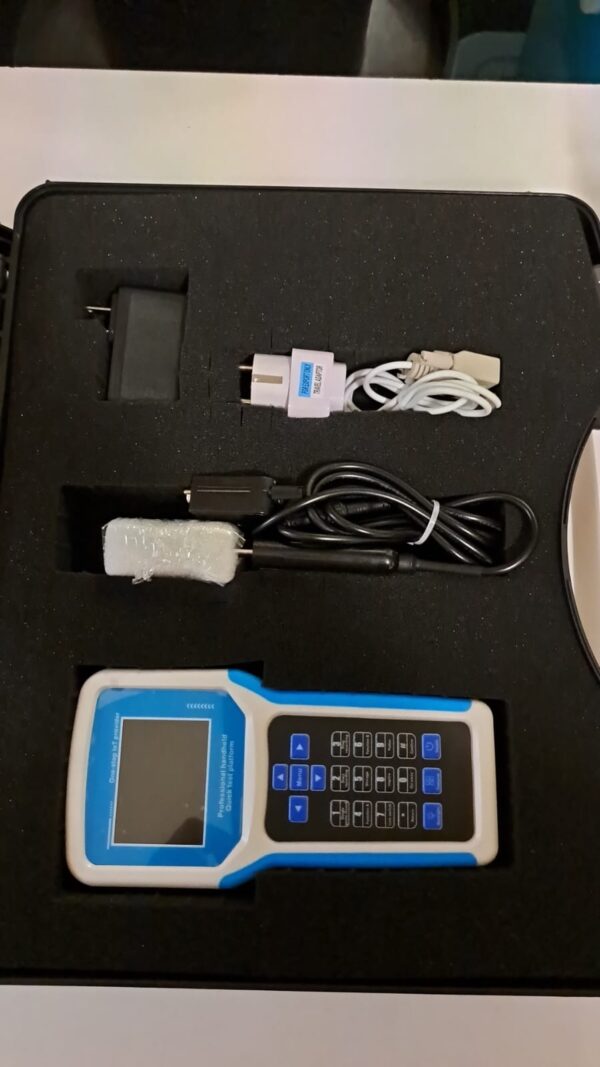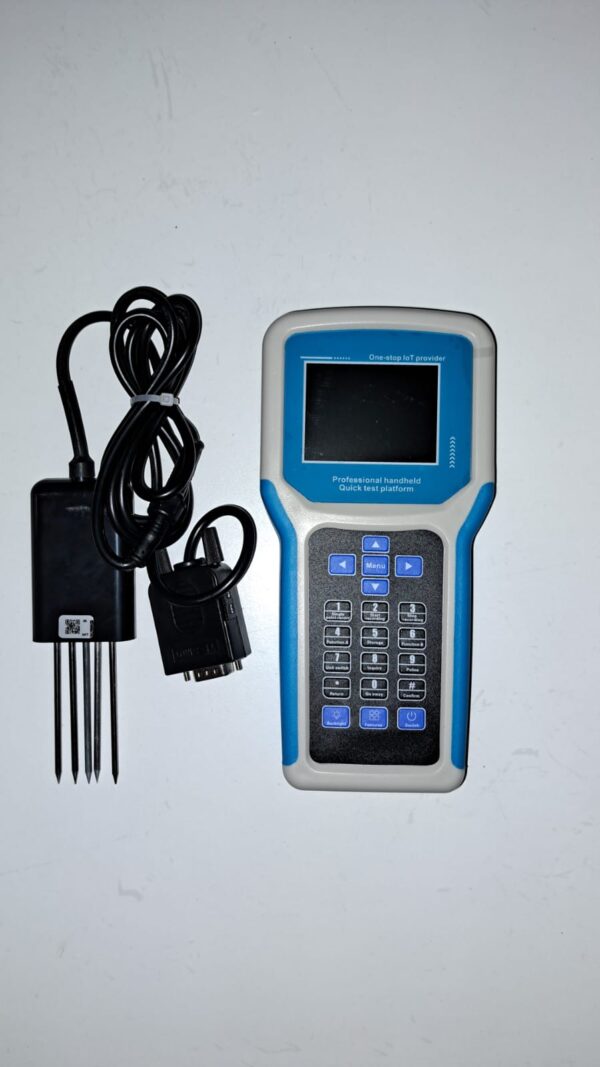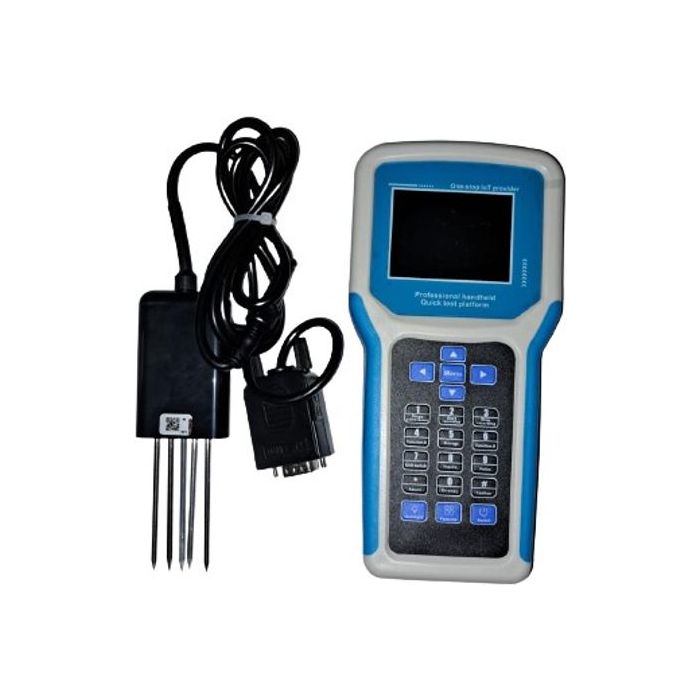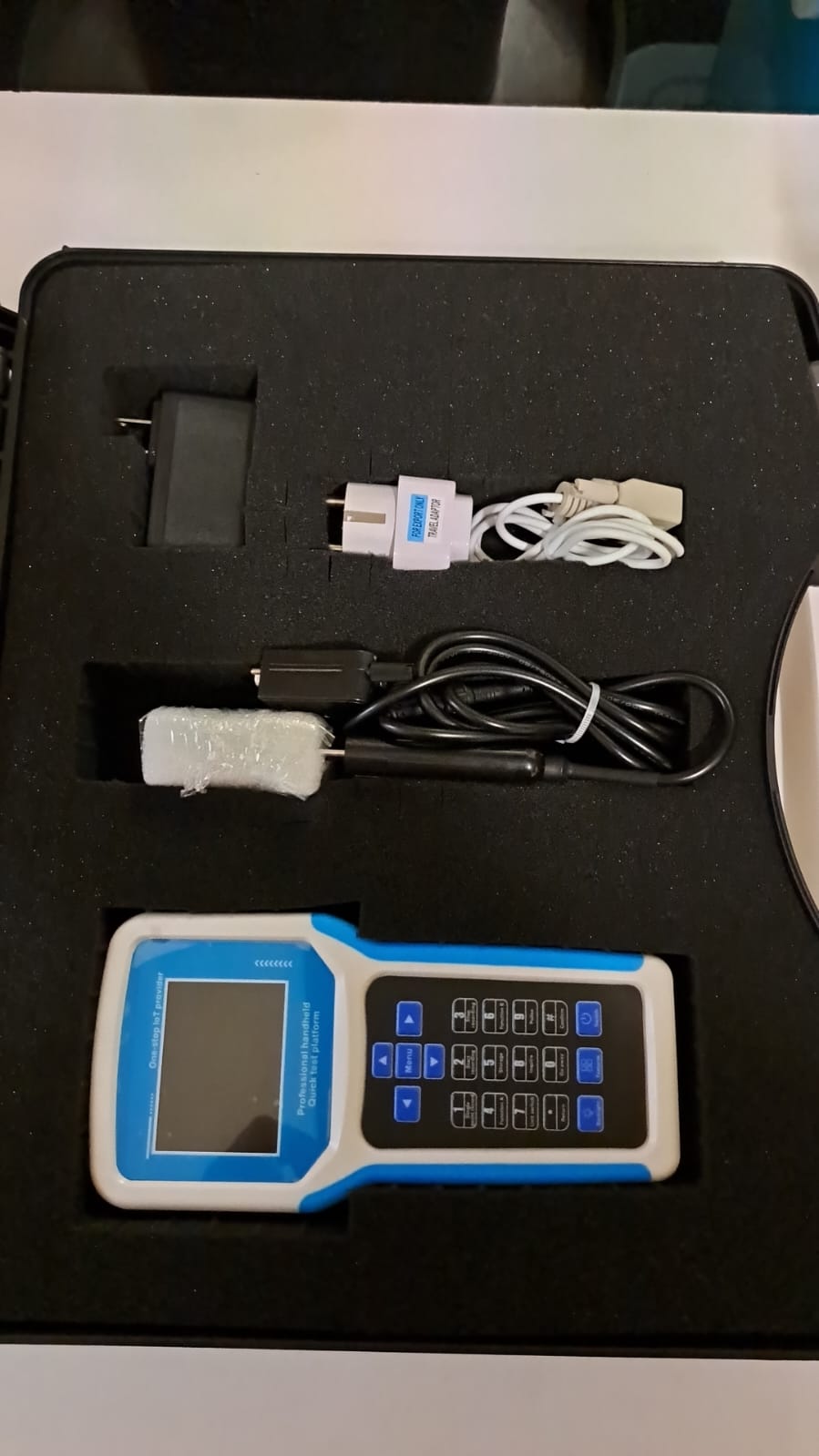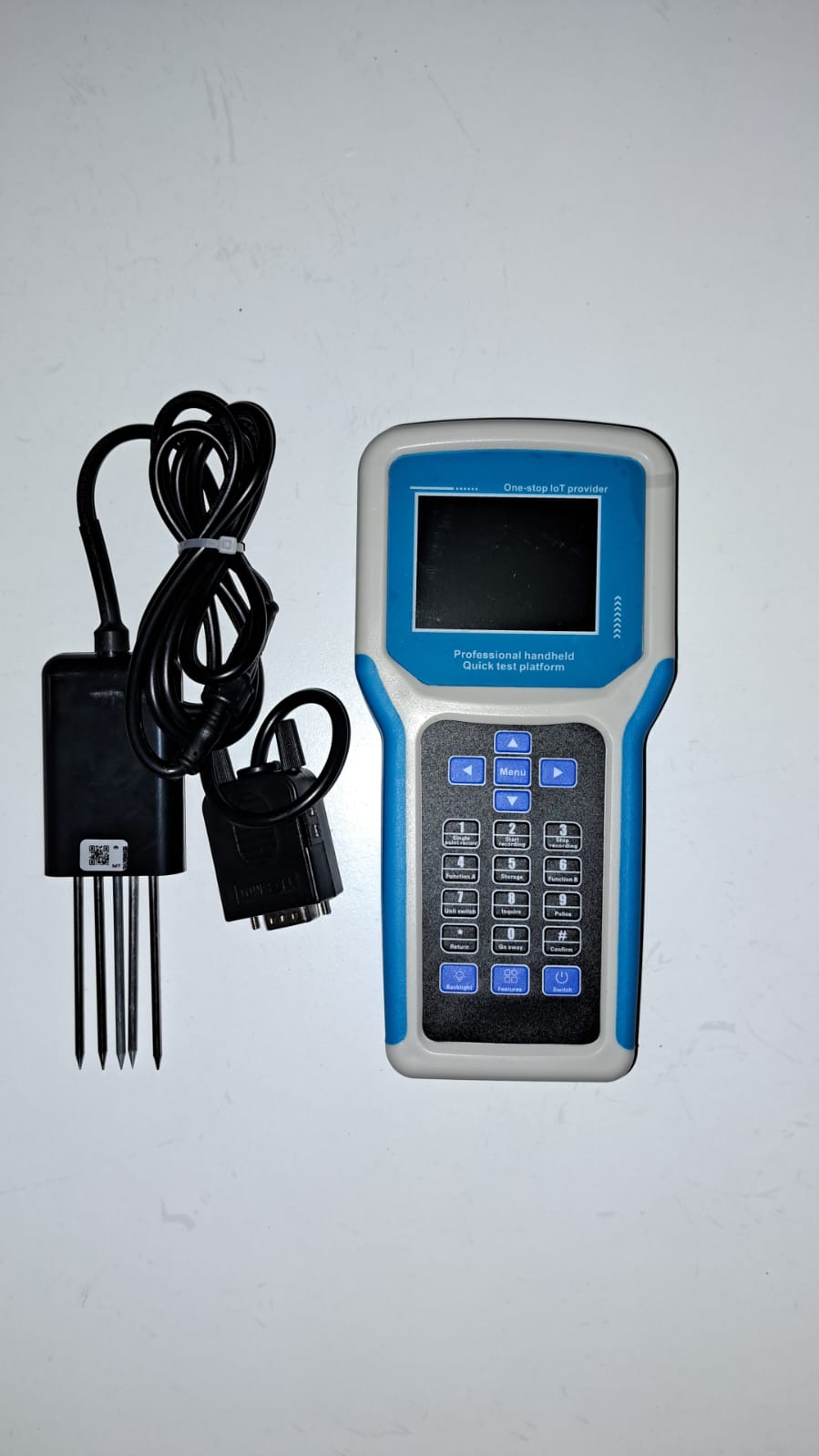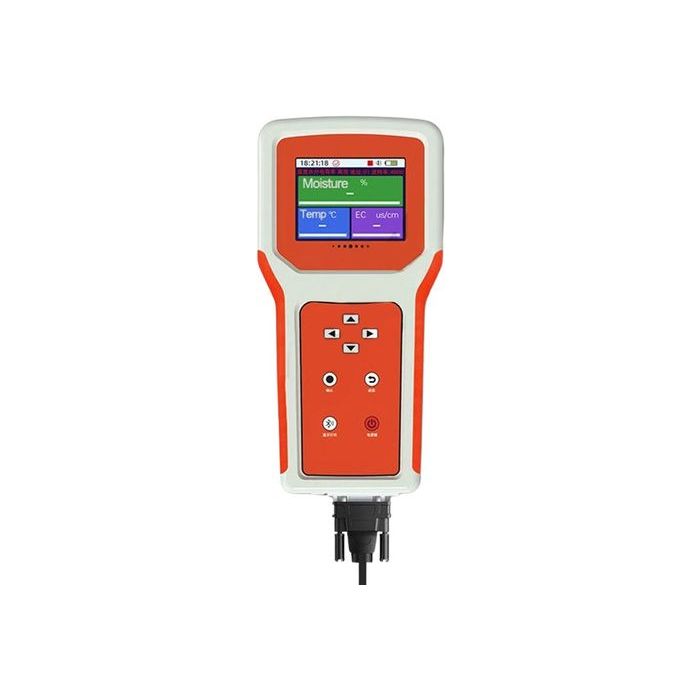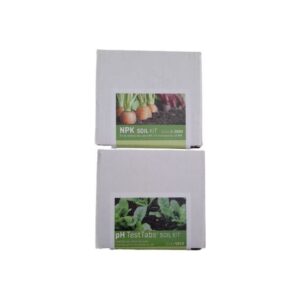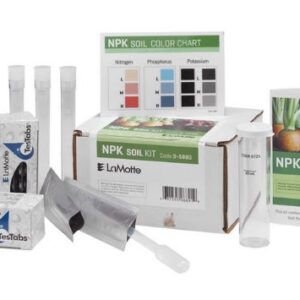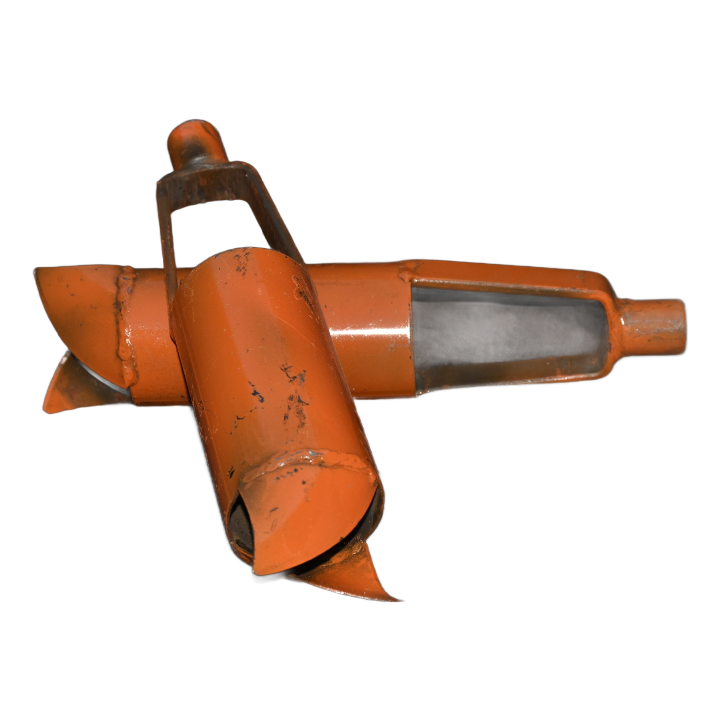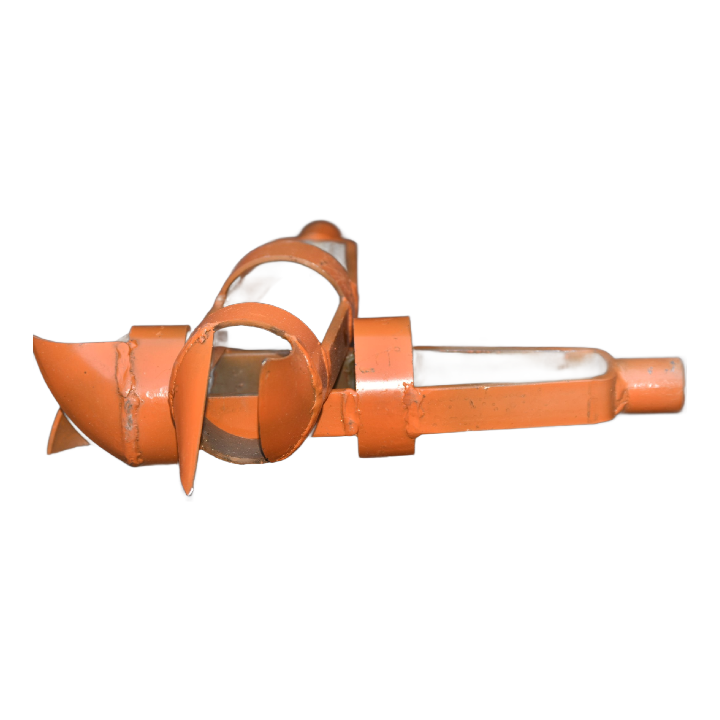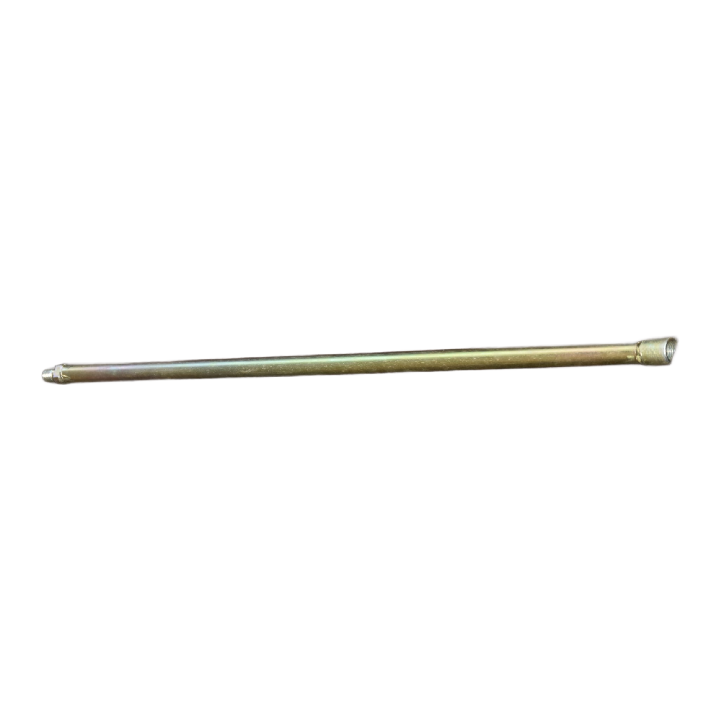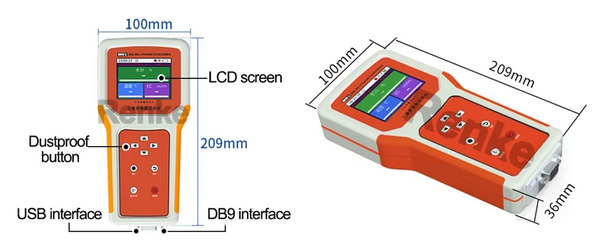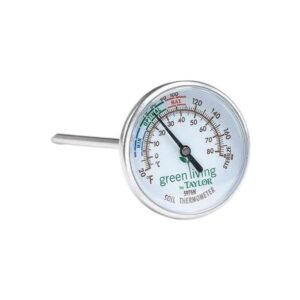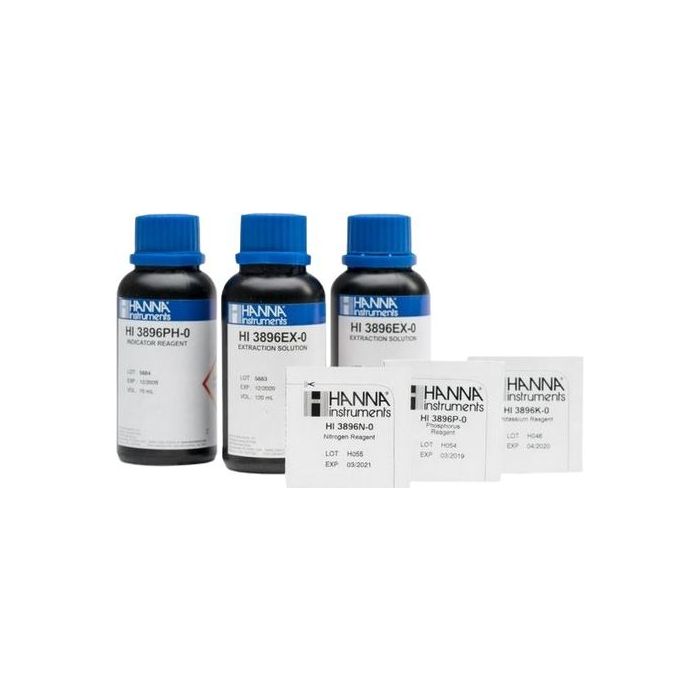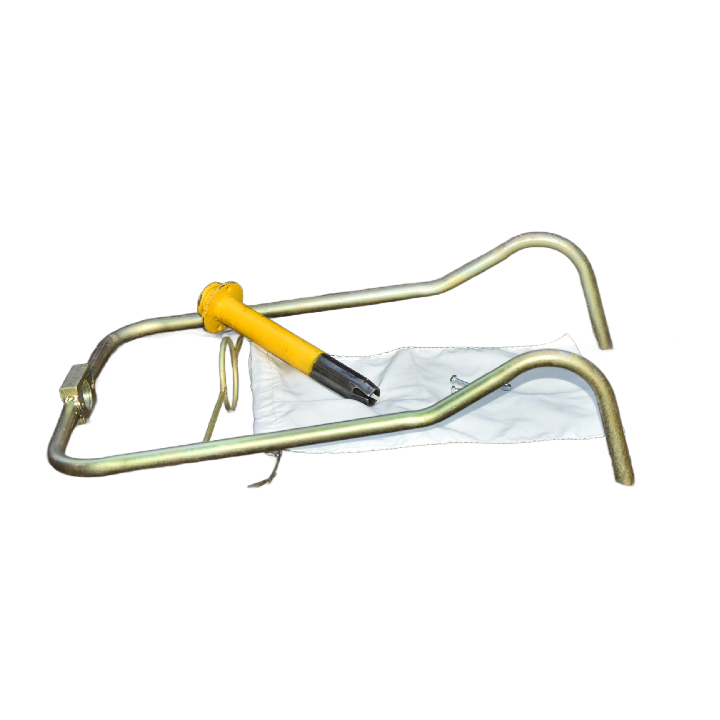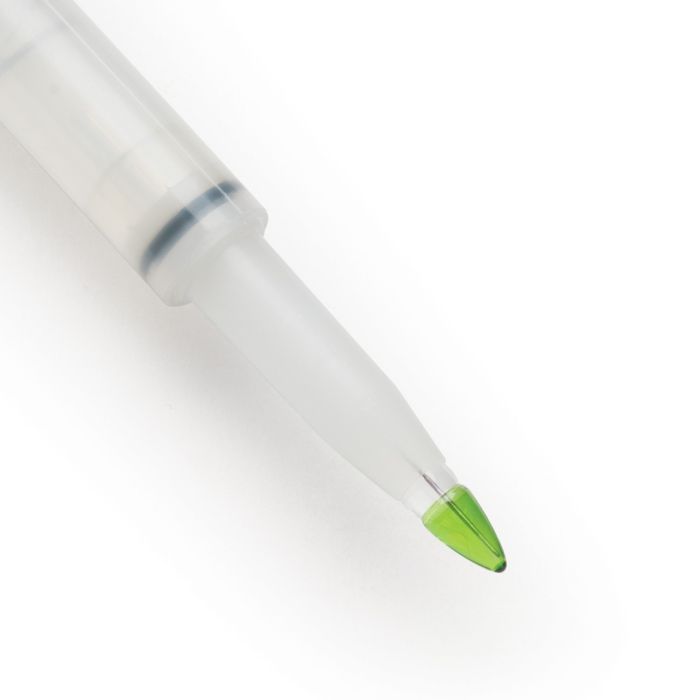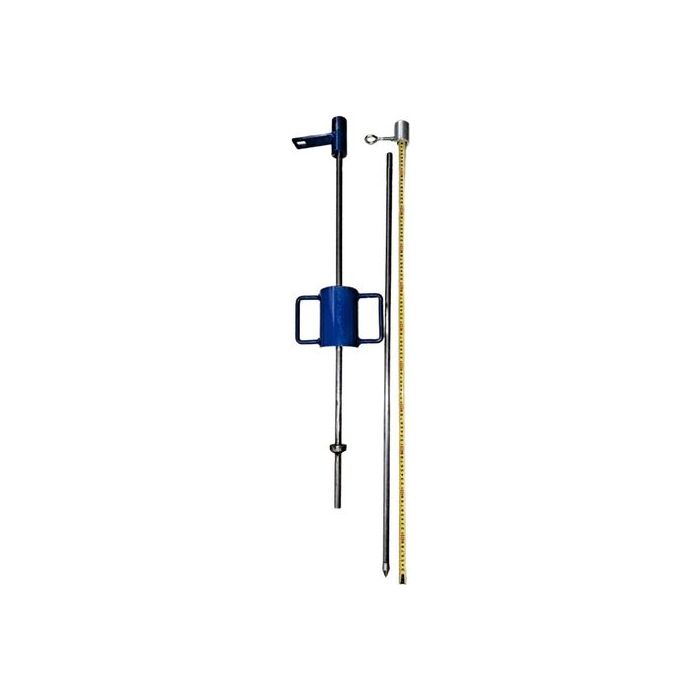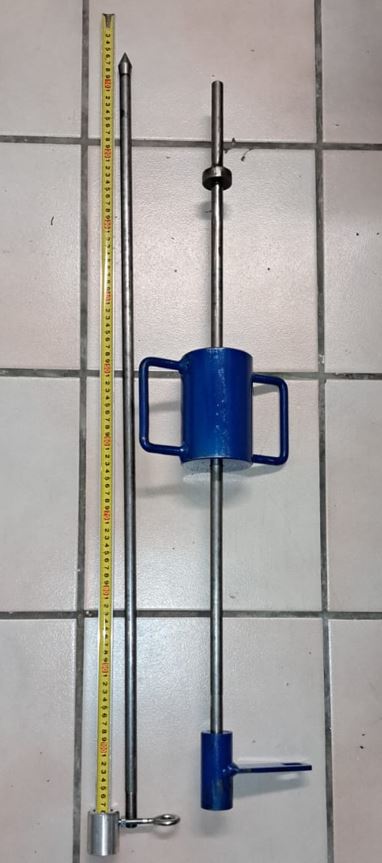Soil meter NPK data logger
R10,500.00 Excl. VAT
Portable soil meter datalogger that simultaneously measures NPK (nitrogen, phosphorus, potassium), temperature, moisture and soil electrical conductivity (EC).
- Description
- Additional information
- Meter specifications & manual
- Data export
Description
Cost-effective solutions for horticulturalists and growers: soil parameter data logger
Comprehensive, multiparameter portable, datalogging soil meter and sensor to measure soil temperature, soil pH, moisture, soil electrical EC, soil nitrogen, phosphorus and potassium. 3% detection accuracy. Suitable for all kinds of soil. The meter can store 200,000 pieces of data, has a recording capability and backlight option. The meter acts like an external drive when connected to the computer, so allowing data export.
Note that the term “pore water conductivity” is perhaps more precise terminology than soil EC or soil conductivity, as what’s actually being measured is the ability of the soil solution (the water and dissolved ions between soil particles) to conduct electricity. Brands like the WET Sensor (WET-2) are measuring the same physical parameter in the soil.
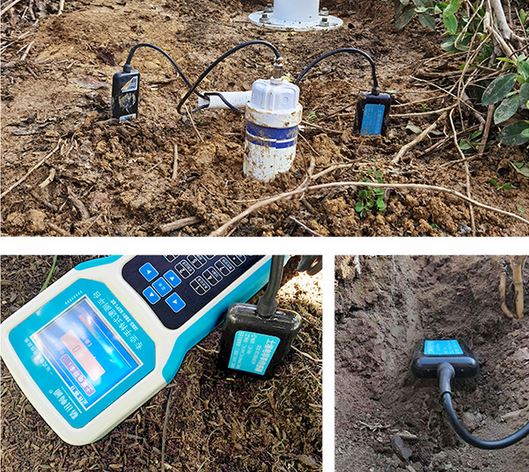
Applications:
- Fertigation and Hydroponics: When growing plants in soilless media, nutrients are delivered through irrigation water (“fertigation”). The nutrient concentration is monitored and controlled by measuring both water content and pore water conductivity (EC). These measurements guide the automated or manual adjustment of liquid fertilizer injection rates into irrigation systems.
- Soil Salinity Management: In situations where irrigation water contains high dissolved salt concentrations (such as recycled water or certain river sources), salts can accumulate in the soil over time. This soil salinization progressively reduces crop yields. Regular monitoring of soil conductivity provides early warning of increasing salt levels, allowing farmers to implement management strategies (like leaching or changing water sources) before crop damage occurs.
- Container Media Management: For container-grown plants, nutrients may be supplied either through fertigation or Controlled Release Fertilizers (CRF). Since CRF release rates vary with temperature and moisture conditions, monitoring the pore water conductivity in the growing media provides objective data about nutrient availability. This measurement helps growers optimize fertilization timing and rates, replacing subjective assessment with quantitative data.
- Direct Nutrient Monitoring: Using multi-probe sensors combines conductivity measurement, and direct measurement of key macronutrients (N, P, K) in the soil solution. While overall conductivity indicates total dissolved salts, these specific nutrient measurements enable precise tracking of individual nutrient availability and can guide targeted fertilizer applications rather than relying solely on general conductivity trends.
- Soil pH: The multiparameter meter give a measure of the soil pH
For example, for strawberry
Here are the general optimal ranges for strawberry production:
pH: 5.5-6.8 (optimal around 6.2)
EC (soil solution): 1.0-1.5 mS/cm
For soilless/hydroponic growing: 1.2-1.8 mS/cm
Soil Moisture: 20-30% volumetric water content
Critical to maintain consistent moisture without waterlogging
NPK ranges (these vary by growth stage):
Nitrogen (N): 20-30 mg/L in soil solution
Phosphorus (P): 20-40 mg/L in soil solution
Potassium (K): 150-200 mg/L in soil solution
(Also measures as:
- N: 20-30 mg/kg
- P: 20-40 mg/kg
- K: 150-200 mg/kg)
Important notes:
These values are general guidelines – optimal levels can vary based on:
Growth stage (vegetative vs fruiting)
Growing medium (soil vs soilless)
Variety of strawberry
Environmental conditions
The N:K ratio should shift during the growing season:
Higher N during vegetative growth
Higher K during fruit development and ripening
Regular monitoring is important as strawberries are sensitive to both deficiencies and excesses, particularly of nitrogen.
Soil NPK data logger
The NPK data logger provides real-time monitoring. Their accuracy may not match laboratory-grade soil testing. Factors like soil type, moisture levels, and soil compaction can affect readings. For precision agriculture, they are useful for trend analysis and quick assessments, but for critical decisions, lab testing may still be necessary.
Technology Limitations:
NPK Measurement: Many affordable multi-parameter meters use electrochemical methods with ion-selective electrodes to estimate NPK levels. These methods provide an indirect measurement and are influenced by various soil factors. They typically give a theoretical value rather than the exact nutrient content. For accurate NPK analysis, laboratory testing of soil samples is still the gold standard.
pH and Conductivity: These measurements are generally more reliable with electrochemical sensors. However, accuracy can still be affected by sensor quality, calibration, and soil conditions.
Temperature: Soil temperature measurement is usually the most straightforward and reliable parameter measured by these devices, often using a thermistor.
Factory Calibration & Internal Algorithms – What’s Going On?
Pre-Calibrated at Factory
These meters are typically:
Calibrated during production using standard soil mixes or liquid solutions.
Programmed with a fixed response curve (e.g., voltage-to-value lookup for pH or conductivity).
Firmware-Based Compensation
The device firmware may include:
Temperature compensation (especially for pH and EC).
Moisture adjustment heuristics (affecting NPK estimates).
A hard-coded range for “normal soil” conditions.
Estimation, Not Direct Ion Measurement
Most NPK values are inferred using:
Electrical conductivity patterns and proprietary correlations.
Possibly colorimetric sensor input (in liquid-test hybrids).
Machine learning models trained on lab-tested soil data (in more advanced units).
These values are more semi-quantitative—meaning they can detect relative changes (like “higher than last week”) but aren’t guaranteed to be lab-accurate.
Soil Conditions:
Moisture Content: Soil moisture significantly affects the readings for NPK and conductivity. Ensure the soil has adequate moisture for proper contact with the sensors. Some meters may also measure soil moisture directly.
Soil Type and Texture: Different soil types (clay, sand, loam) can influence the interaction between the sensors and the soil solution, affecting the accuracy of nutrient and conductivity readings.
Compaction: Densely packed soil might not allow for good contact with the pins, leading to inaccurate readings. Very loose, ploughed soil is also difficult to measure and requires compaction.
Temperature: While the meter measures temperature, extreme soil temperatures can affect the performance and accuracy of the other sensors. Many meters have automatic temperature compensation for conductivity, but this might not apply to all parameters.
Salinity: High soil salinity can interfere with nutrient readings and significantly affect conductivity measurements.
Measurement protocol
For more consistent and reliable results with this meter, establish an in-house measurement protocol to reduce variations due to measurement methodology.
- Ensure soil has consistent moisture and compaction before testing. For example, dry, loose, ploughed soil will not give and NPK measurement.
- Insert probes to the same depth each time
- Clean the probes thoroughly between readings
- Use the same pressure when inserting probes
- Consider the readings as relative indicators rather than precise measurements
If you need accurate nutrient data for professional applications, I’d recommend sending samples to a soil testing laboratory.
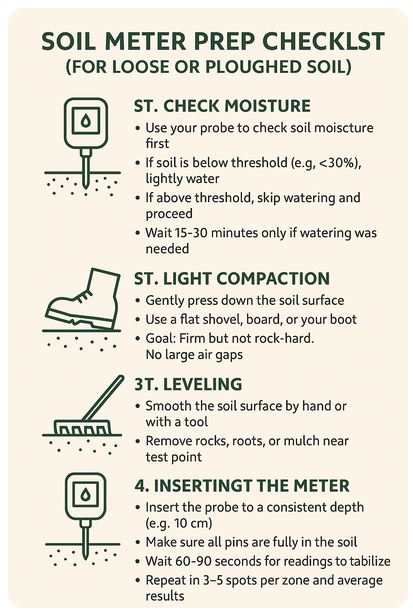
Soil Meter Prep Checklist (For Loose or Ploughed Soil)
✅ STEP 1: Pre-Moistening
☐ Check if soil is dry to the touch or soil moisture is low (<30%).
☐ Lightly water the area with a fine spray if required.
☐ Wait 15–30 minutes (if moistened) to let moisture distribute evenly.
✅ STEP 2: Light Compaction
☐ Gently press down the soil surface using:
A flat shovel
A board/tamper
Your boot (light pressure only)
☐ Goal: Firm but not rock-hard. No large air gaps.
✅ STEP 3: Leveling
☐ Smooth the soil surface by hand or with a tool.
☐ Remove rocks, roots, or mulch near test point.
☐ Mark the test spot if you want to return to it later.
✅ STEP 4: Inserting the Meter
☐ Insert the probe to a consistent depth (e.g. 10 cm).
☐ Make sure all pins are fully in the soil.
☐ Wait up to 60–90 seconds for readings to stabilize.
☐ Repeat in 3–5 spots per zone and average results.
📓 Optional Notes
Log moisture level, time of day, and weather.
Record whether the area was fertilized recently.
Compare with a baseline “control” (soil not fertilized) spot if possible.
Additional information
| Weight | 3 kg |
|---|---|
| Dimensions | 40 × 44 × 15 cm |
Download the soil meter manual
JXBS-3001-SUC-PT-Portable-Soil-Speed-PlatformV11
This soil meter measures NPK (nitrogen, phosphorus, potassium), temperature, moisture and soil electrical conductivity (EC).


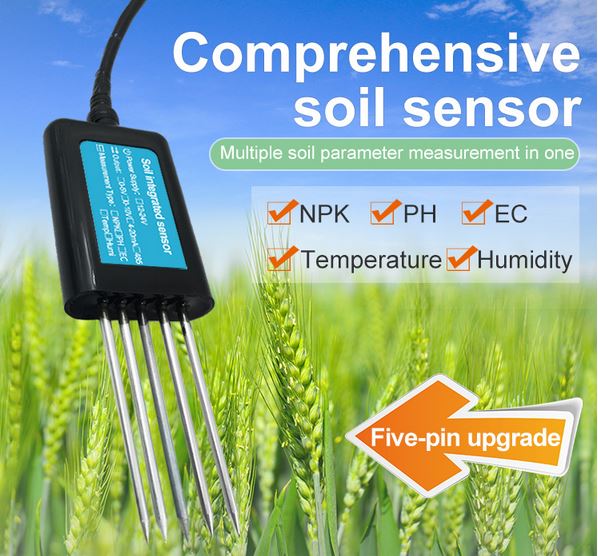

The stored information on the portable data logger can be exported to your computer.
